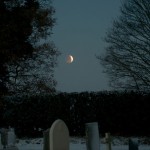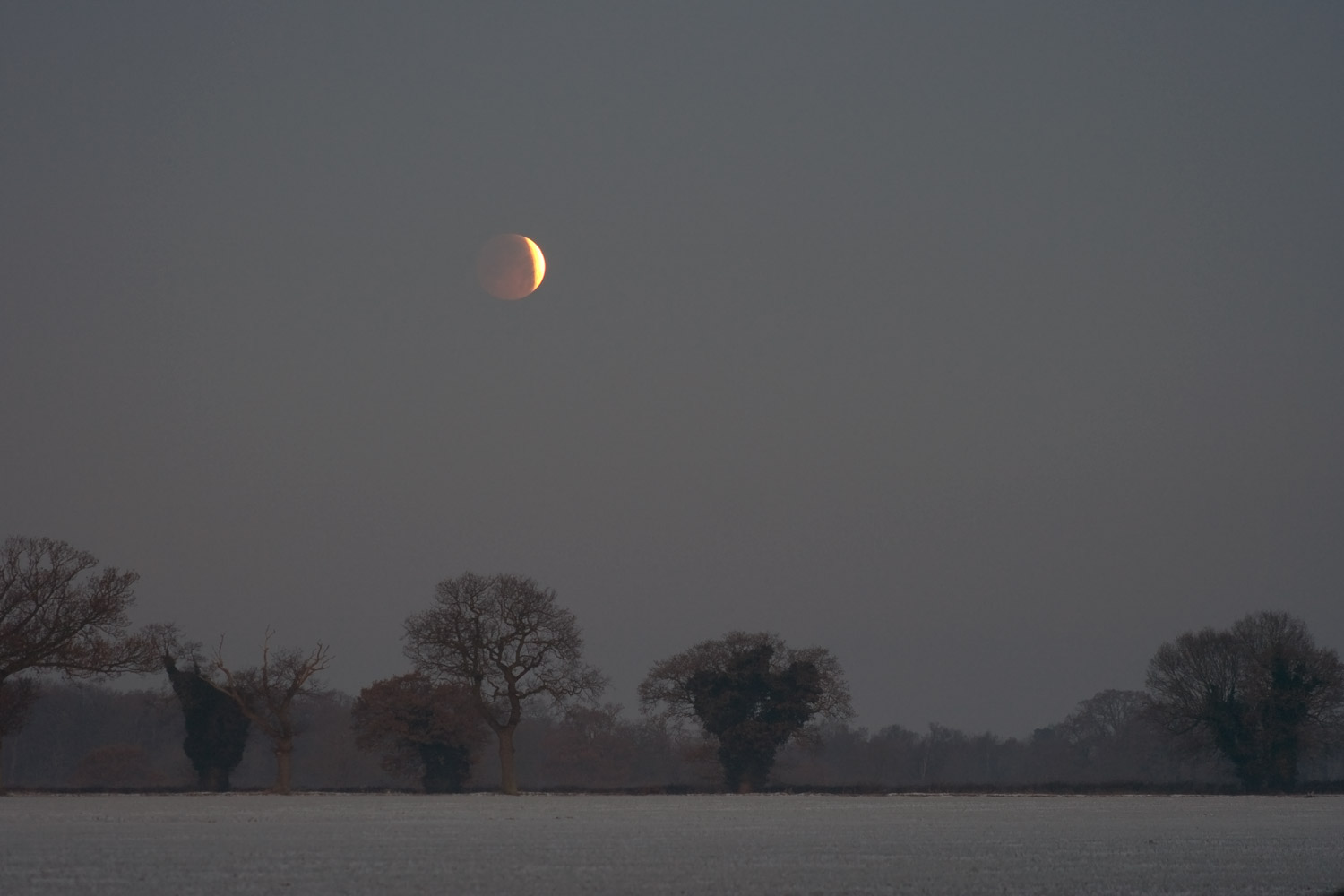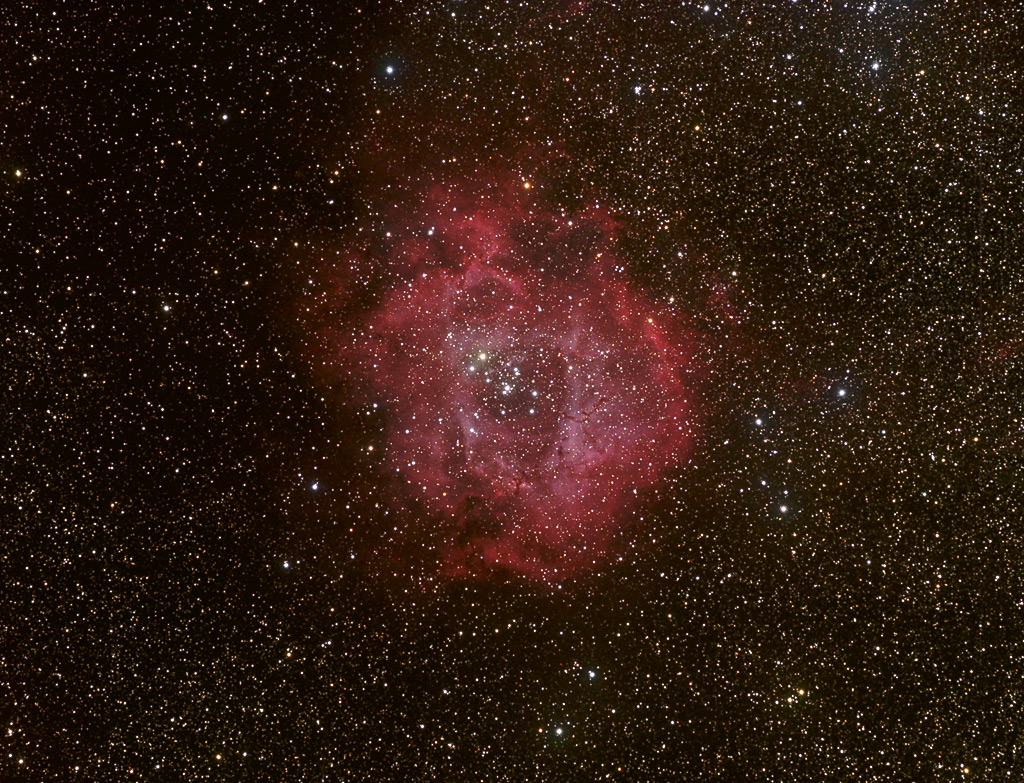In the last picture, the crescent of the moon is almost invisible against the dawn light.
Month: December 2010
Lunar eclipse
Tuesday morning was bright and clear (and minus 9C) when I left the house at 06:30 to walk to the top of the lane. As I setup the camera and tripod, the Earth’s shadow was just starting to take the first bite out of the lunar disk. Sticking mainly with the Canon 75-300 zoom I took pictures until the moon faded into the dawn sky as it reached totality. At 07:30 I took this wider field image.
Camera: Canon 350D
Lens: Canon 75-300 zoom @ 125mm f/4.5
ISO: 400, 1/3 sec
The Rosette nebula is a large cloud of ionised hydrogen gas in the direction of the constellation Monoceros. Distance estimates vary but it’s probably 5000 light years distant with an overall diameter of 130 light years. The nebula has the Caldwell number 49 and the cluster of stars at the centre is separately listed as Caldwell 50 (also NGC 2044).
While the central cluster is visible under dark skies with binoculars the nebula is very difficult to see visually as it’s about 1 degree in diameter with a very low surface brightness. The red colour is also not visible. Relatively short CCD images however, show what a spectacular object this is.
Telescope: GRAS-14 – Takahashi FSQ-106ED
Camera: SBIG STL-11000M-ABG






